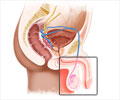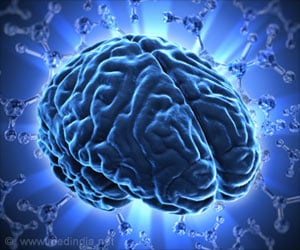Analyzing compounds found in sebum helps in identifying changes in people with Parkinson's Disease, using a new simple and painless skin swab test.

‘Analyzing compounds found in sebum (the oily substance that coats and protects the skin) helps in identifying changes in people with Parkinson's Disease, using a new simple and painless skin swab test. This 'world first' testing strategy is not only useful in diagnosing Parkinson's but also in monitoring the development of the condition. This unveiled novel diagnostic sebum-based biomarkers for Parkinson's allows measuring the efficacy of new, experimental treatments in slowing, stopping, or reversing the progression of Parkinson's disease.’





Parkinson's disease (PD) is a progressive neurodegenerative disorder that primarily affects movement due to the loss of nerve cells – neurons that produce a chemical messenger (neurotransmitter) in the brain called dopamine (black substance). It is characterized by the hallmark formation of inclusion proteins called alpha-synuclein in the form of Lewy bodies.
Sebum is rich in lipid-like molecules and is one of the lesser-studied biological fluids in the diagnosis of the condition. People with Parkinson's may produce more sebum than normal - a condition known as seborrhoea.
The study team had recruited 500 people with and without Parkinson's whose sebum samples sebum were taken from their upper backs for analysis using different mass spectrometry methods.
Skin Swab Test in Parkinson’s Disease
Advertisement
Detailed analysis showed changes in people with Parkinson's in lipid (fat) processing and mitochondria. Problems with mitochondria (the tiny energy-producing batteries that power cells) are one of the hallmarks of Parkinson's.
Advertisement
"We believe that our results are an extremely encouraging step towards tests that could be used to help diagnose and monitor Parkinson's. Not only is the test quick, simple, and painless but it should also be extremely cost-effective because it uses existing technology that is already widely available. We are now looking to take our findings forwards to refine the test to improve accuracy even further and to take steps towards making this a test that can be used in the NHS and to develop more precise diagnostics and better treatment for this debilitating condition", says Professor Perdita Barran, Professor of Mass Spectrometry at The University of Manchester.
A conventional diagnostic method like DaTscan is regularly used to help specialists confirm the loss of dopamine-producing cells that cause the development of Parkinson's. However, a similar loss may also occur in some other rarer neurological conditions. This results in misdiagnosis of the disease which is overcome by this new method.
"Every hour, two more people in the UK are diagnosed with Parkinson's and a significant portion of these people may well have been misdiagnosed with and treated for, another condition before receiving their correct diagnosis. This has been compounded in the COVID-19 pandemic where people have been left waiting and have faced months of anxiety to confirm their diagnosis by a health professional. However, with this innovative test, we could see people being diagnosed quickly and accurately enabling them to access vital treatment and support to manage their Parkinson's symptoms sooner", says Professor David Dexter, Associate Director of Research at Parkinson's UK.
Source-Medindia















